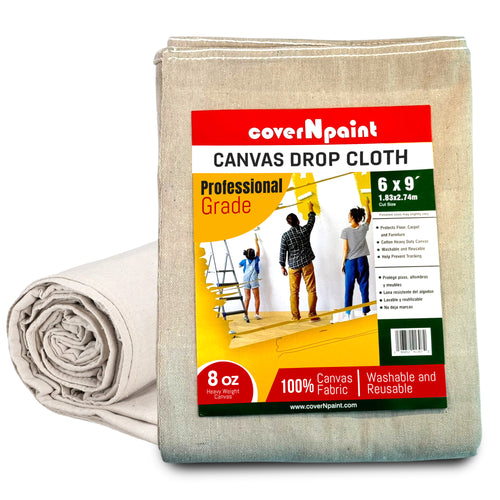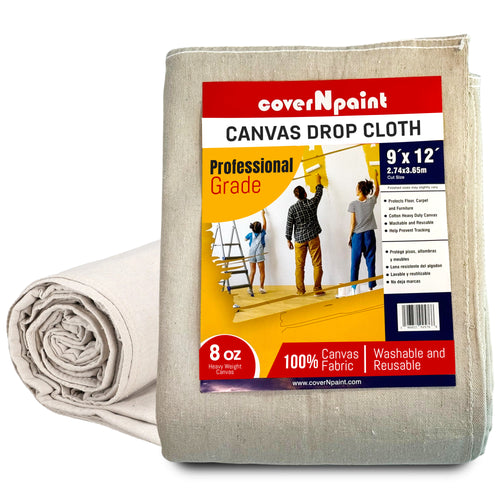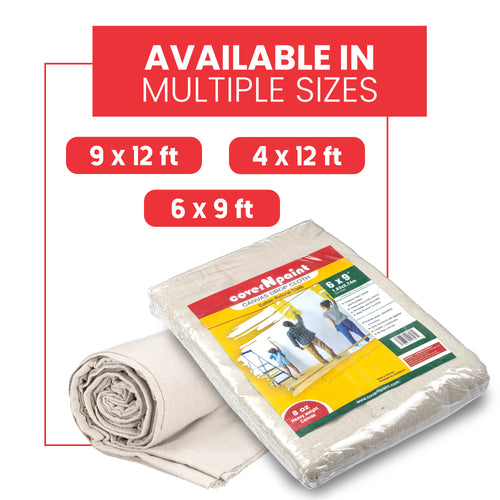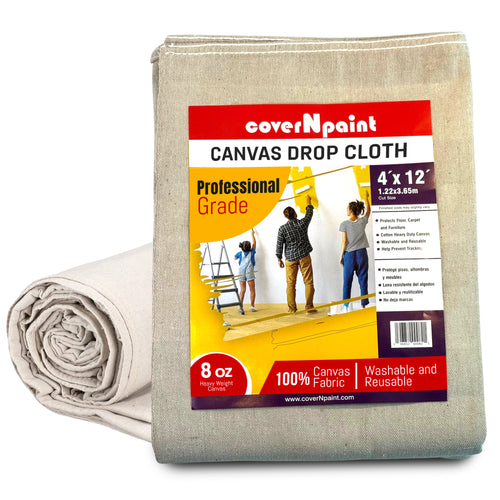Painting has always been one of the most effective ways to transform spaces, but keeping surfaces clean has been a challenge throughout history. To solve this, the painters drop cloth was introduced as a protective barrier. Over time, drop cloths have evolved in terms of materials, functionality, and durability—shaping the way painters and DIY enthusiasts work today.
This article explores the history and evolution of painters drop cloths, tracing their journey from early canvas drop cloths to modern synthetic materials. By understanding this history, users can make informed choices about which type of paint drop cloth suits their needs today.
Early Beginnings: Canvas Drop Cloths In Traditional Painting
For centuries, canvas drop cloths were the primary solution for protecting surfaces during painting. Canvas, made from tightly woven cotton, became popular because of its:
-
Durability: Canvas was strong enough to withstand heavy paint spills and foot traffic.
-
Absorbency: Unlike plastic, canvas absorbed paint drips, reducing the risk of smearing.
-
Reusability: Canvas cloths could be washed, folded, and used repeatedly.
In the early 19th and 20th centuries, professional painters relied heavily on canvas drop cloths, not only for home painting projects but also for larger industrial and commercial work.
The Mid-Century Shift: Affordability And Accessibility
As painting became a common DIY activity in the mid-20th century, manufacturers began producing drop cloths in different sizes and thicknesses. The rise of mass production made canvas drop cloths more affordable for the average homeowner.
However, affordability also introduced experimentation with lighter materials. Plastic and paper-based paint drop cloths appeared as cost-effective alternatives for one-time projects. These disposable options changed the way casual painters approached surface protection.
The Emergence Of Plastic Drop Cloths
Plastic drop cloths gained popularity in the late 20th century for their affordability and convenience. They offered benefits such as:
-
Waterproofing: Unlike canvas, plastic created a completely impermeable barrier.
-
Low cost: Ideal for quick, one-off painting projects.
-
Lightweight: Easy to carry, unfold, and dispose of.
However, plastic paint drop cloths came with limitations. They were prone to tearing, slippery when walked on, and lacked the reusability of canvas drop cloths. As a result, professionals still favored canvas, while DIY painters often turned to plastic for temporary use.
The Modern Era: Hybrid And Specialized Materials
Today, the painters drop cloth market includes a variety of materials tailored to different needs:
-
Canvas Drop Cloths: Still the most trusted option for professionals due to their reusability and eco-friendliness.
-
Poly-Backed Canvas: Combines canvas absorbency with a waterproof backing for extra protection.
-
Paper/Plastic Hybrids: Lightweight, inexpensive, and effective for small, temporary projects.
-
Specialized Coatings: Some modern drop cloths feature slip-resistant backings for added safety.
This evolution reflects not only advancements in materials but also changing user demands—from sustainability to workplace safety.
Why Canvas Drop Cloths Remain The Gold Standard
Despite the introduction of newer materials, the canvas drop cloth remains a favorite among professionals and serious DIYers. Here’s why:
-
Durability: Can withstand multiple painting projects without wearing out quickly.
-
Reusability: Easily washable and eco-friendly.
-
Safety: Provides a stable, non-slippery surface compared to plastic.
-
Versatility: Can be used indoors, outdoors, or even repurposed for non-painting tasks.
For painters who value longevity and sustainability, canvas continues to be the superior choice.
The Future Of Painters Drop Cloths
Looking ahead, the evolution of drop cloths is likely to focus on sustainability and performance. Manufacturers are experimenting with:
-
Eco-friendly fabrics made from recycled cotton.
-
Biodegradable coatings to replace synthetic plastics.
-
Smart textiles that repel paint without reducing absorbency.
As painting practices adapt to environmental standards, the humble painters drop cloth will continue to evolve while maintaining its central role in surface protection.
Strategic Insight: Linking Past To Present
Understanding the history of drop cloths also helps us appreciate their role in sustainable painting practices today. For a deeper look into how modern canvas contributes to eco-friendly projects, see our guide on Eco-Friendly Advantages of Using a Canvas Painters Drop Cloth in 2025.
A Curiosity-Building Note
While the history of painters drop cloths shows how far these tools have come, many users are still surprised at the small adjustments they can make to maximize performance. Even the way you fold, store, or layer a canvas drop cloth can significantly extend its life. coverNpaint USA continues to highlight these expert tips, giving both professionals and DIY enthusiasts new ways to get more value from a tool that has stood the test of time.
Benefits Of Knowing The Evolution Of Drop Cloths
-
Smarter Choices: Understand which material suits your project best.
-
Cost Efficiency: Learn why reusability beats disposability in the long run.
-
Sustainability Awareness: Recognize the environmental benefits of canvas drop cloths.
-
Improved Safety: Choose materials that reduce slips and accidents.
FAQs
Q1: When were painters drop cloths first used?
Canvas drop cloths became common in the 19th century as professional painters sought durable, reusable protection.
Q2: Why is canvas still preferred over plastic?
Canvas is durable, washable, non-slippery, and eco-friendly, making it ideal for long-term use.
Q3: Are modern drop cloths different from traditional ones?
Yes. Today, there are hybrid options like poly-backed canvas and slip-resistant coatings.
Q4: Can I still use plastic drop cloths?
Yes, but they are best for short-term, low-cost projects where reusability is not required.
Q5: What’s the future of drop cloths?
Expect more eco-friendly and performance-driven materials, such as recycled fabrics and biodegradable coatings.













